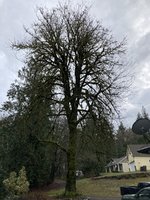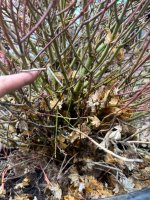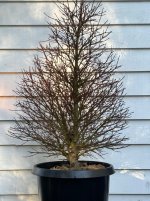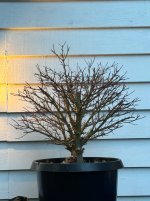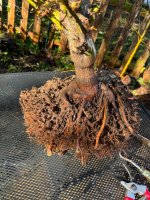Cruiser
Omono
“Experience is the name we give to our mistakes.” Oscar Wilde
The air layer failed. By late April emerging shoots stopped extending. By mid May they had all dried out.
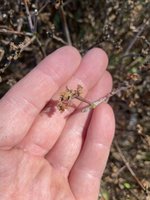


I’m not certain why it failed.
A few potential theories..
1) there was a heat wave a few weeks after the layer was started. 90+ degrees F. Very hot for this area and early in the growing season.
2) Too much water around the girdle. A large plastic disc was placed at the girdle to promote lateral root growth. It did not drain well. The disc + frequent waterings to address the higher than normal temps could’ve created issues?
3) When creating the layer I strongly scraped the girdle to ensure all cambium was removed. Multiple times. Could I have scraped too deep?
4) The sphagnum/soil/bark was contaminated.
Does anyone have feedback? Ideas as to what could've gone wrong?
The air layer failed. By late April emerging shoots stopped extending. By mid May they had all dried out.



I’m not certain why it failed.
A few potential theories..
1) there was a heat wave a few weeks after the layer was started. 90+ degrees F. Very hot for this area and early in the growing season.
2) Too much water around the girdle. A large plastic disc was placed at the girdle to promote lateral root growth. It did not drain well. The disc + frequent waterings to address the higher than normal temps could’ve created issues?
3) When creating the layer I strongly scraped the girdle to ensure all cambium was removed. Multiple times. Could I have scraped too deep?
4) The sphagnum/soil/bark was contaminated.
Does anyone have feedback? Ideas as to what could've gone wrong?



